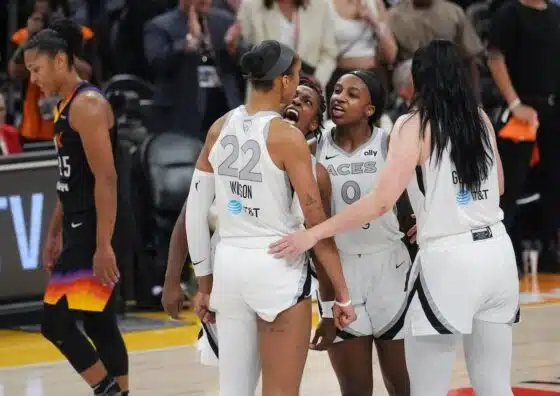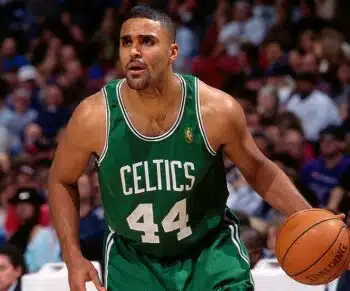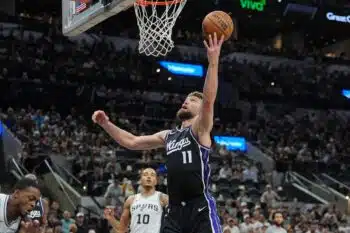NBA
How The Las Vegas Aces Built A 3-0 Lead In The 2025 WNBA Finals

The Las Vegas Aces are one win away. The narrative of their season is now crystallized and oh-so-close to completion but it bears repeating: At the beginning of August, they suffered a 111-58 slaughtering at the hands of the Minnesota Lynx, dropping their record to an even 14-14.
Vegas won its final 16 games to snag the No. 2 seed entering the WNBA playoffs and yet, questions remained. The Aces played a soft schedule down the stretch, there were still weak points in their rotation, the Finals MVP Chelsea Gray won in 2022 felt even further in the past. Disrespectful? Not entirely. In the first round, the Seattle Storm had a chance to win the series at the buzzer. In the second round, the carcass of the Indiana Fever took the deciding Game 5 to overtime.
Somehow, this last step of the journey may be the most unremarkable part of it. That is not to say the least entertaining — Games 1 and 3 both went down to the wire and the individual performances have been jaw-dropping — but the easiest to digest: The Aces have simply been better than the Phoenix Mercury. They’ve outplayed Phoenix, they’ve out-schemed Phoenix and, of course, they are led by A’ja Wilson, for whom the illustrious Best Player in the World title falls flat. She’s chasing something even grander.
But we’ll get to that once the Aces actually finish the job. For now, we can simply marvel at how they’ve gotten here under the guidance of head coach Becky Hammon.
Game 1, Finding The Zone
Basketball, particularly at the highest levels, has become a weak-link sport. Owen Phillips helped introduce that concept to the hoops world this spring: “If you want to build a team for success, you need to look less at your strongest links and more at your weakest ones.”
In postseason basketball, with more rigid game-plans, this thesis rings truer: A perimeter player who can’t reliably shoot will get ignored entirely, a devastating blow to the offense. An atrocious individual defender will get hunted relentlessly, similarly brutal for the defense. Whatever team has the true “weak link” on the floor matters more than one star slightly outperforming its counterpart on the other side. Any perceived flaws are ruthlessly exploited.
To that end, Mercury-Aces is a fascinating Finals and might be the final salvo to this era of the WNBA. Back in August, I wrote that my biggest question for Phoenix was if it could truly figure out what to do with Natasha Mack — a 6-foot-3 rebounding, shot-blocking extraordinaire — on offense.
The answer, as the Mercury crawl toward their deathbed, was no. This is not to say she is a weak-link player but she is the ultimate casualty of Phoenix designing ITS offense around a primary ball-handler who cannot shoot. And yes, Alyssa Thomas had an MVP-caliber season. But in the Finals, Phoenix head coach Nate Tibbetts has played Mack just 42 minutes over three games. Here’s why:
they just never figured out Mack's offense :/ pic.twitter.com/bL6YsE2kin
— Lucas Kaplan (@LucasKaplan_) October 10, 2025
Ultimately, Tibbetts feels he can’t play one of his best rebounders and defenders. (It’s no coincidence Hammon — known the world over for relinquishing the offensive glass to get back in transition — has had a change of heart. Las Vegas is rebounding over 30 percent of its misses this series, a mark it hasn’t reached over a regular season since 2019.)
This led to aggressive Phoenix downsizing in Game 1, e.g. DeWanna Bonner and Sami Whitcomb. Vegas countered with many minutes from guards Dana Evans and Jewell Loyd, and buckets ensued. For Phoenix, Bonner struggled mightily on defense while Vegas could not contain two-player actions with Thomas. Whether handling the ball or screening and posting up a switch, Thomas drew two defenders and chaos ensued.
That is, until the Aces went zone for much of the game’s final 15 minutes. It was a funky matchup zone, a 2-1-2 sort of thing until the ball entered the elbow area, at which point Vegas would man up. Either way, it kept Thomas from drawing two defenders and the defense from collapsing:
The Mercury scored just 15 points in the fourth quarter, relinquishing their lead and — unbeknownst at the time — their chance to make this a series.
Game 2, Guarding The Stars
Game 2 came down to the stars. How would the Aces defend Phoenix’s offense, led by Thomas? How would Phoenix prevent Wilson from getting going? OK, fine, almost every game comes down to this sort of question. But in Game 2, it was the difference.
Las Vegas didn’t need to play a ton of zone to slow Phoenix’s offense; instead, it caught up to the fastball. Nekias Duncan of Yahoo Sports pointed out that, “after initiating 18 pick-and-rolls in Game 1, with the Mercury generating a whopping 1.13 points per possession on those trips, Thomas initiated six in Game 2.”
That is the bread-and-butter of Phoenix’s offense, inverted pick-and-roll, with Thomas using a smaller shooter as a screener. After getting whopped by this action in Game 1, the Aces cut it off at the pass in Game 2, with their guards fighting fire with fire. They clawed at Thomas’ handle at the point of attack, forcing three turnovers and aborting many more pick-and-rolls, hence Thomas running only six.
Some of this was pure execution, some of it was smart matchups. Put 5-foot-6 Dana Evans on 6-foot-3 Kathryn Westbeld, a bit of weak-link theory in action. Westbeld is a capable stretch four but can’t do much else offensively. Tibbetts doesn’t have many other choices but playing Westbeld over Mack felt like a half-measure. On the other side, stashing Evans on Westbeld allowed Hammon to throw Jewell Loyd on Phoenix’s bigger threats. This meant a rejuvenated Loyd was often in those pick-and-roll actions and she did a wonderful job against Thomas:
Evans also deserves credit here. She was thrown in a few actions versus Thomas and when she had to guard the 6-foot-4 Bonner, did the same.
All this made it much more disappointing Phoenix could not make Las Vegas’ weak links pay. Megan Gustafson, Kierstan Bell and NaLyssa Smith are all offensively challenged players who seem to be obvious help points. And yet, Phoenix did not adequately disrespect any of them. In Game 2, Wilson and Jackie Young took 43 of the Aces’ 75 field goal attempts and nine of their 13 freebies, despite neither touching 35 minutes.
Phoenix saw its primary action get stifled on one end, but on the other, rarely threw double-teams at Wilson. In pick-and-rolls with Young handling, Phoenix often opted to guard the two best players on the team straight up, tasking Kahleah Copper & Co. to fight through screens with minimal help off the aforementioned weak points. Of course, the Aces should be commended for their spacing and play design, too:
Liked this double PnR from Vegas, second screen comes late while Kah is trying to navigate. Opens a pull-up pocket for Jackie Young.
Wouldn't be surprised if we see them explore this look again. pic.twitter.com/FC5nIAhs2D
— Nekias (Nuh-KY-us) Duncan (@NekiasNBA) October 5, 2025
Game 3, The Kitchen Sink
After Game 1, Tibbetts said he felt “excited” the Aces had to go to zone so early in the series. If only he knew what was coming. Up 2-0 in the series, the mad scientist who is Hammon opened Game 3 in an honest-to-god box-and-one. Young face-guarded Copper and the rest of the Aces guarded Thomas like she had the plague:
I am *fascinated* by the Aces' defense to start. pic.twitter.com/8R1naqKytF
— Nekias (Nuh-KY-us) Duncan (@NekiasNBA) October 9, 2025
“I just wanted them to have to think, do something else, so I didn’t have to call the first timeout,” Hammon told media postgame.
Indeed, the Aces burst out to a 21-8 lead before Phoenix closed the gap.
To their credit, the Mercury did find their changeup in this one. Plenty of off-ball actions between their guards and wings led to buckets; they either threw it over the top to Bonner cutting inside or got Copper and Satou Sabally freed up with off-ball screens. Alas, they couldn’t keep up with Vegas’ offense; once again, Young and Wilson took well over half of their team’s shots.
In Game 3, Tibbetts put Thomas on Vegas’ guards. Given Gray’s excellent series — she’s averaging over eight assists and absolutely incinerating help defense…
…you could understand why Tibbetts put his best defender on Gray.
But this left Bonner, Westbeld and others to try and stop Wilson, who ended up with a monstrous 34-14-4 line on 67 percent true shooting. Bonner popped off for 25 points, so the issue wasn’t her minutes per se but the defensive alignment just didn’t hold up. If the box-and-one usage throughout the game was Hammon throwing the kitchen sink at Phoenix, its odd defensive matchups was the corresponding move but it once again fell flat.
Against Wilson, with her high release point and appetite for the midrange, late help is no help. This lesson was never more evident than on the last possession of the game, which turned into one of the defining shots of Wilson’s career:
Another angle of A’ja Wilson’s game winner to give her 34 PTS and push the @LVAces past the Mercury 90-88 in Game 3 of the WNBA Finals presented by @youtubetv
The Aces are up 3-0 in the series! pic.twitter.com/m8xwTbXPPg
— WNBA (@WNBA) October 9, 2025
This series was not decided by tactical adjustments. The basketball writer class tends to focus on coaching decisions as the key to the outcome of a playoff series but the Mercury were doomed by a poor shooting series, moments of poor decision-making, being lackadaisical on the glass and injury. The sharpshooting Whitcomb hurt her lower leg in Game 1 and hasn’t made a shot since. Sabally is all sorts of banged up and will miss Game 4 with a concussion.
And yet, there is no doubt as to which is the sharper, more well-coached team in these WNBA Finals, a fascinating one for the outlook of the league. The Mercury will end this series shooting more threes, more shots at the rim and, potentially, more free throws than the Aces. This was part of Tibbetts’ (who had an excellent postseason run prior to this series) plan and, perhaps, why he was content to let Wilson play 1-on-1, for example. Conversely, there’s only so much you can do when your lead ball-handler does not shoot jumpers.
These are not excuses, though. Not in the face of the Aces, which have seen nearly their whole, flawed roster contribute in this series. Kiah Stokes got the game-winning stop in Game 1, her only possession of the afternoon. Gustafson locked down Thomas to help win Game 3. Evans had a moment in Game 1, Bell did in Game 2, Smith has handily won her minutes in this series.
When we look back on the 2025 WNBA Finals, we will see a true crowning moment for Wilson, not a GOAT, but perhaps the GOAT. For this version of the Aces as a whole, an unimpeachable dynasty. But right now, with the series still technically alive, I only see a masterful coaching performance and a roster with flaws that only make it more of a worthy champion.











